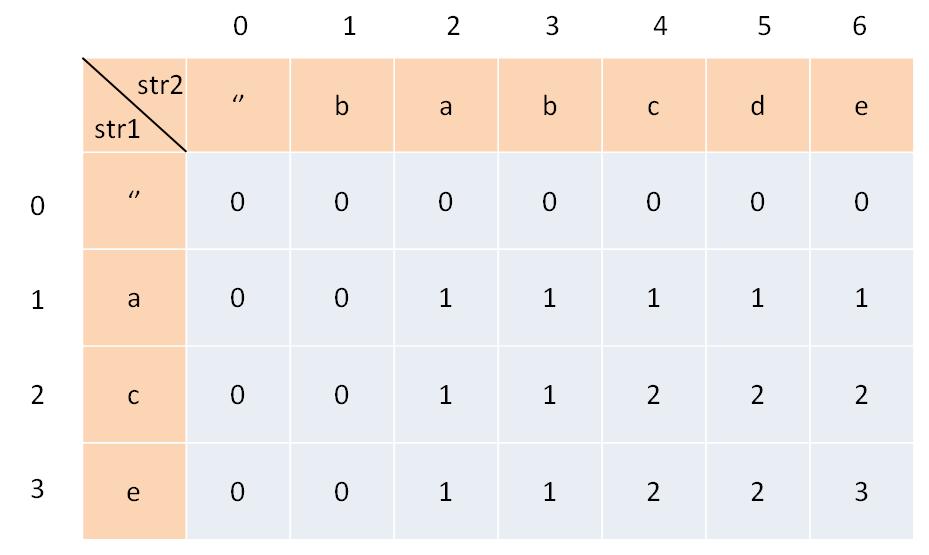本文最后更新于:2022年4月9日 中午
给定两个字符串 text1 和 text2,返回这两个字符串的最长公共子序列的长度。
一个字符串的 子序列 是指这样一个新的字符串:它是由原字符串在不改变字符的相对顺序的情况下删除某些字符(也可以不删除任何字符)后组成的新字符串。
若这两个字符串没有公共子序列,则返回 0。
示例 1:
输入:text1 = "abcde" , text2 = "ace" 3 "ace" ,它的长度为 3 。
示例 2:
输入:text1 = "abc" , text2 = "abc" 3 "abc" ,它的长度为 3 。
示例 3:
输入:text1 = "abc" , text2 = "def" 0 0 。
提示:
1 <= text1.length <= 10001 <= text2.length <= 1000输入的字符串只含有小写英文字符。
Solution
参考:《算法小抄》2.6
其他相同题目:[1035 不相交的线]
动态规划,使用 dp table
dp[i] [j]:长度为[0, i - 1]的字符串text1与长度为[0, j - 1]的字符串text2的最长公共子序列为dp[i] [j]
class Solution :def longestCommonSubsequence (self, text1: str , text2: str ) -> int:len (text1)len (text2)if len1*len2 == 0 : return 0 0 ]*(len2+1 ) for _ in range (len1+1 )]for i in range (1 , len1+1 ):for j in range (1 , len2+1 ):if text1[i-1 ]==text2[j-1 ]:1 +dp[i-1 ][j-1 ]else :max (dp[i-1 ][j],dp[i][j-1 ])return dp[-1 ][-1 ]
cpp
1 2 3 4 5 6 7 8 9 10 11 12 13 14 15 16 17 18 19 20 21 22 class Solution {public :int longestCommonSubsequence (string text1, string text2) int n1 = text1.size();int n2 = text2.size();if (n1 * n2 == 0 ) return 0 ;vector <vector <int >> dp(n1+1 , vector <int >(n2+1 , 0 ));for (int i = 1 ; i <= n1; ++i) {for (int j = 1 ; j <= n2; ++j) {if (text1[i-1 ] == text2[j-1 ]) {-1 ][j-1 ] + 1 ;else {-1 ][j], dp[i][j-1 ]);return dp[n1][n2];
输出具体字符串,见 NC127 最长公共子串
1 2 3 4 5 6 7 8 9 10 11 12 13 14 15 16 17 18 19 20 21 22 23 24 25 26 27 28 29 30 31 32 33 class Solution {public :string LCS (string str1, string str2) int n1 = str1.size();int n2 = str2.size();vector <vector <int >> dp(n1+1 , vector <int >(n2+1 , 0 ));int maxLen = 0 , end = 0 ;for (int i = 1 ; i <= n1; ++i) {for (int j = 1 ; j <= n2; ++j) {if (str1[i-1 ] == str2[j-1 ])-1 ][j-1 ] + 1 ;else dp[i][j] = 0 ;if (dp[i][j] > maxLen) {-1 ;string res = "" ;if (maxLen == 0 ) return "-1" ;else 1 , maxLen);return res;
